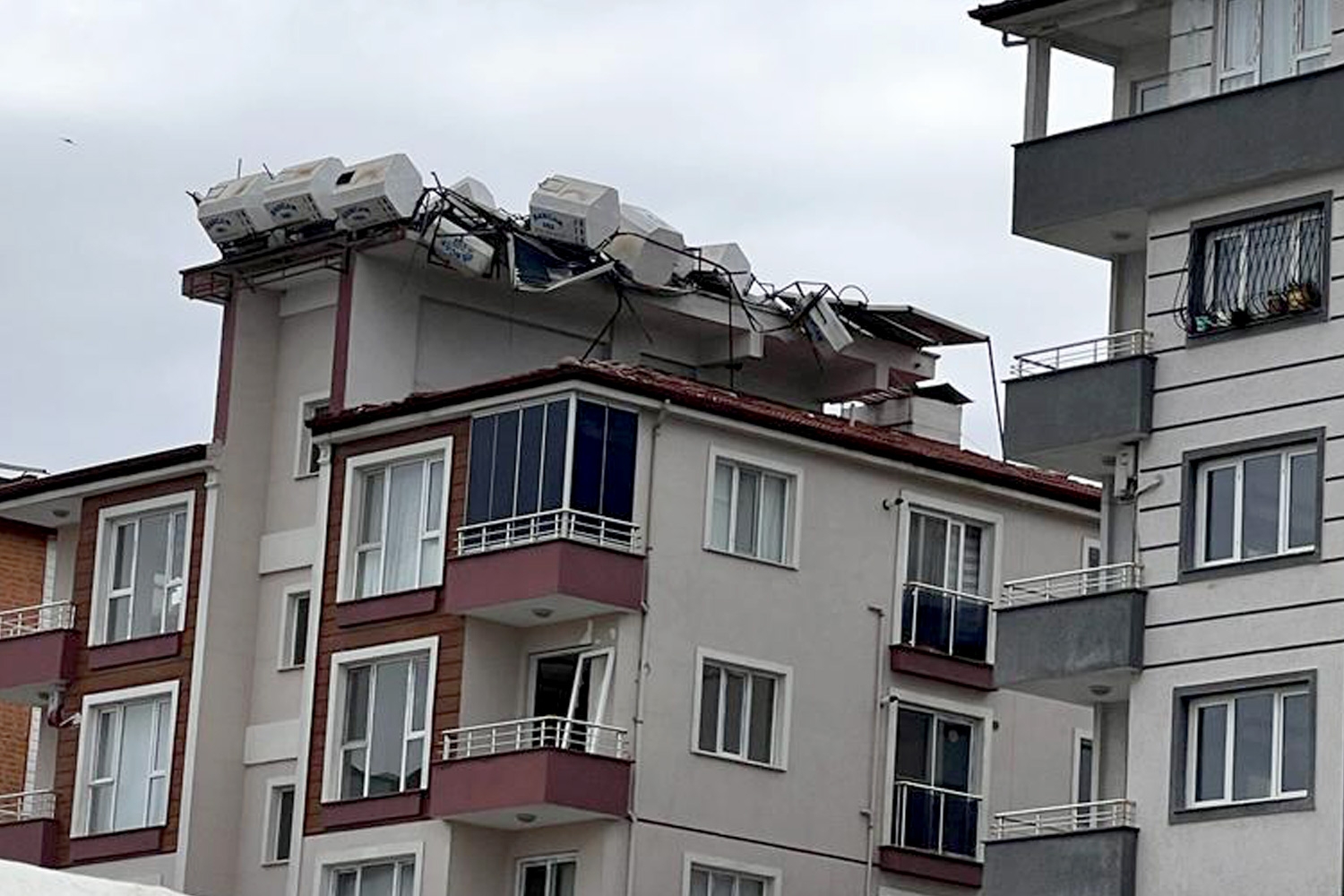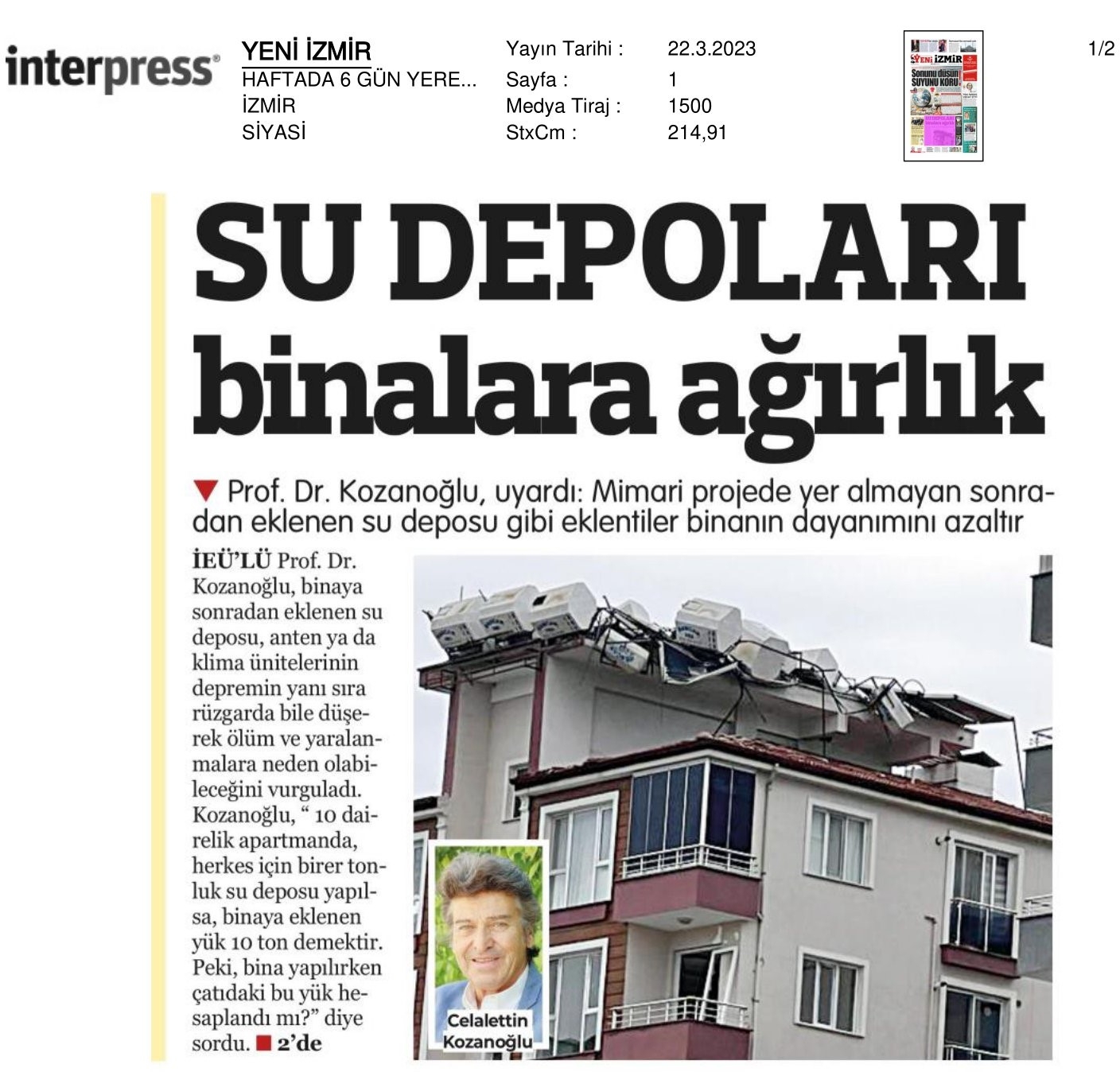Exterior additions on buildings: cause for concern

Prof. Dr. Celalettin Kozanoğlu, Head of Department of Civil Engineering, Izmir University of Economics (IUE), warned about the water tanks placed on the roof of the buildings afterwards, although they are not in the original architectural project. Stating that the tons of water tanks added to the top of the building may pose a risk to the building in the event of an earthquake, Prof. Dr. Kozanoğlu said, “In an apartment building with 10 flats, if one ton of tank is placed for each flat, it means that an extra load of 10 tons is added to the building. This load, which is not included in any static calculations, affects the oscillation of the building during an earthquake and reduces its strength. Of course, I am not saying water tanks should not be built, but this process must be designed before the building is built.”
Prof. Dr. Kozanoğlu warned the citizens against the dangers on the exterior of the buildings stating that exterior additions on buildings such as water tanks, television antennas, satellite dishes, and AC units cause great danger during strong winds and storms as well as earthquakes.
ADDED WITHOUT CALCULATION
Pointing out that it is necessary to be careful especially against the water tanks placed on the roof of the buildings, Prof. Dr. Kozanoğlu said, “First of all, we should understand that later additions to the building must be determined beforehand in the architectural project. If you create the architectural project so that a water tank can be added on the building, the engineer makes a static calculation accordingly. In other words, the building would be strong enough to carry the water tank in case of a possible earthquake. What are we doing? Although it is not included in any static calculations or planned, we place the water tank in the building as we like. We put the water tank in the roof especially to make it easier and economical. In an apartment building with 10 flats, if one ton of tank is placed for each flat, it means that an extra load of 10 tons is added to the building. Well, was this load on the roof calculated while the building was being built? The answer is unfortunately no. This is where the problem starts.”
PREFER THE GROUND FLOOR, NOT THE ROOF
Prof. Dr. Kozanoğlu continued as follows: “It is also important in which part a load you add to the building is located in. In other words, the load on the ground floor versus the load added to the roof affects the building performance differently in the event of an earthquake. The tons of weight added to the roof has a hammering or, in other words, whipping effect on the building. It affects the oscillation of the building in earthquakes and causes a lot of load to the building. Such additions should not be made if they are not included in the project. If it has to be done, it is much better to do it on the ground floor with a suitable pumping system than on the roof. However, since the pumping system is an extra cost, these tanks are always placed on the roof. If possible, the water tanks currently located on the roof should also be placed on the ground. Unfortunately, we are acting on our own. Earthquakes show us that doing things our way cause trouble for us later on.”
ATTENTION TO AIR CONDITIONERS AND ANTENNAS
Stating that the air conditioning units and antennas in the building should also be checked, Prof. Dr. Kozanoğlu said, “We saw that many air conditioning units fell to the ground during the earthquake, even if the building did not collapse. These units are attached with dowels or some palliative apparatus. Over time, these additions wear out and rust. It poses a great risk by falling even in a small earthquake. The same is true for antennas. Air conditioners or antennas must be installed by competent people and checked regularly.”


























